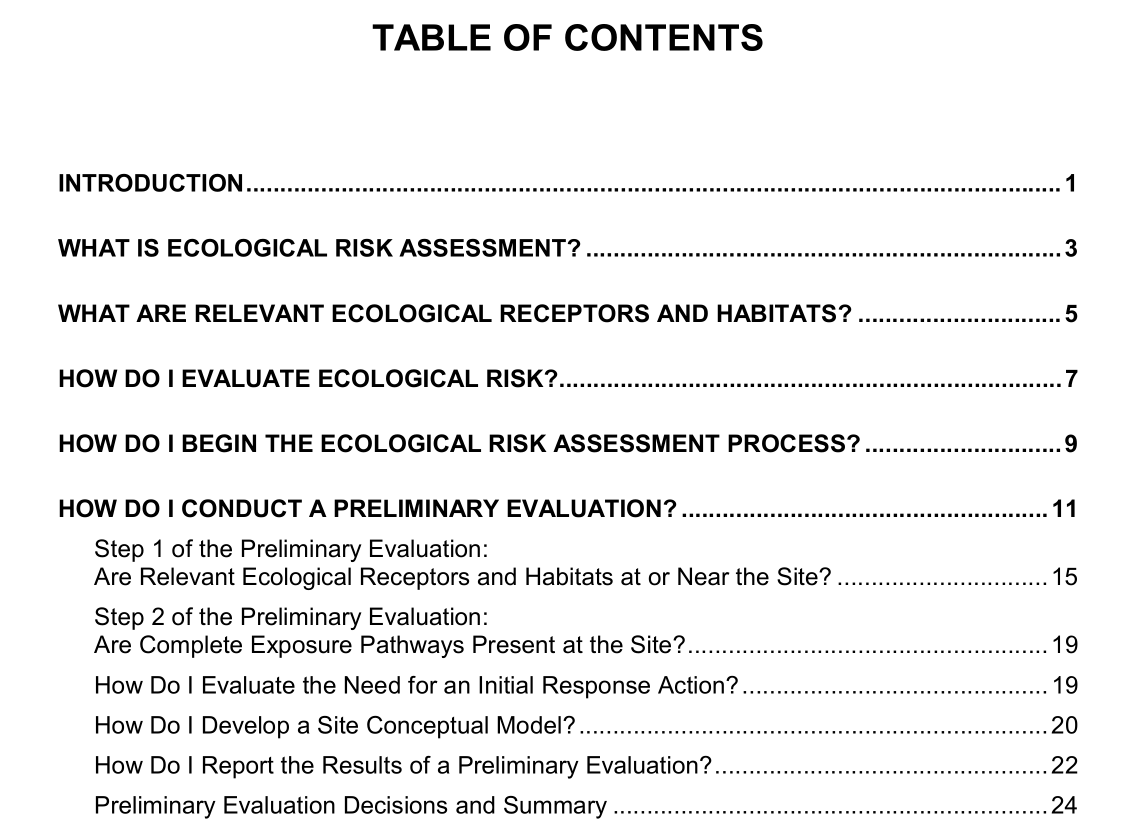API Publ 4700 pdf download

API Publ 4700 pdf download.PRIMER FOR EVALUATING ECOLOGICAL RISK AT PETROLEUM RELEASE SITES
The first step in evaluating ecological risk is to locate applicable Federal, state, or local guidance and regulations (“regulatory considerations” in Figure 2). Some spill or release conditions may be covered by existing regulations, and this primer’s users should be aware of how these regulatory considerations apply to specific situations. This primer is based, in part, on a review of guidance developed by several states; however, in some cases, this primer may conflict with state or Federal guidance. Site investigators should consider consulting with relevant regulatory agencies to determine appropriate action. The recommended reading/sources of information section at the end of this primer lists Federal resources that can be used to research regulations and ecological risk approaches that apply at a specific site. At a petroleum release site, the site investigator typically considers several factors that may affect an ecological risk assessment. These factors also may be used to determine the need for and appropriateness of various remedial technologies. Factors to be considered include the assessment of human health risk, cost, benefits and risks of remediation, availability of remedial technology, stakeholders’ interests, local concerns, and possibly political issues.
A complete exposure pathway usually consists of a chemical source and migration pathway by which the chemical constituent may reach a receptor or habitat. Both conditions must exist now or potentially exist in the future for an ecological risk to be present. Otherwise, the site investigator should conclude that there is no ecological exposure and, therefore, no ecological risk. If such a conclusion can be documented, no further ecological assessment is warranted (see Figure 2). It is helpful to view the two primary conditions previously described as parts of a site conceptual model. Conceptual models are visual depictions of the relationships among chemical sources, exposure pathways, and receptors/habitats at a petroleum release site. These models may be simple or complex, depending on the possible relationships being conveyed. The most useful conceptual models are either drawings that show where released material might move through environmental media (Figure 3) or box diagrams (Figures 4 and 5). These models communicate information on predominant transport mechanisms and pathways, and also are useful to indicate the presence of complete pathways.
These distances should be modified in some cases. For example, if the released material enters a storm drain or surface conduit, the material may flow in a concentrated form to locations beyond the above-specified distances. In such cases, the site investigator should consider the receptors’ or habitats’ proximity to the discharge locations of surface or subsurface drainage systems. Also, dissolved constituent plumes in groundwater may exceed ¼ mile where aquifer permeability and hydraulic gradients are high. Site aquifer and groundwater quality data will be needed to identify such locations. The absence or presence of relevant ecological receptors and habitats may be obvious. If the petroleum release site is located adjacent to a recreational lake, then the site is located near relevant receptors and habitats. If, on the other hand, the site is located in an urban area surrounded by concrete or asphalt and is at distance from a waterway, then it most likely is not located near relevant receptors and habitats. The site investigator may be unsure of the surrounding environment or unfamiliar with environmental resource designations. In such cases, the site investigator should obtain a U.S. Geological Survey (USGS) topographic site map and contact the local Conservation Commission or relevant natural resource agency personnel to identify areas designated as wetlands, special habitats, or habitats where threatened or endangered species may live. Natural resource agency information about receptors and habitats is necessary because some habitats and species have been afforded special status or protection by Federal and state agencies (see Table 2 for Federal agencies responsible for specific environmental resources).









